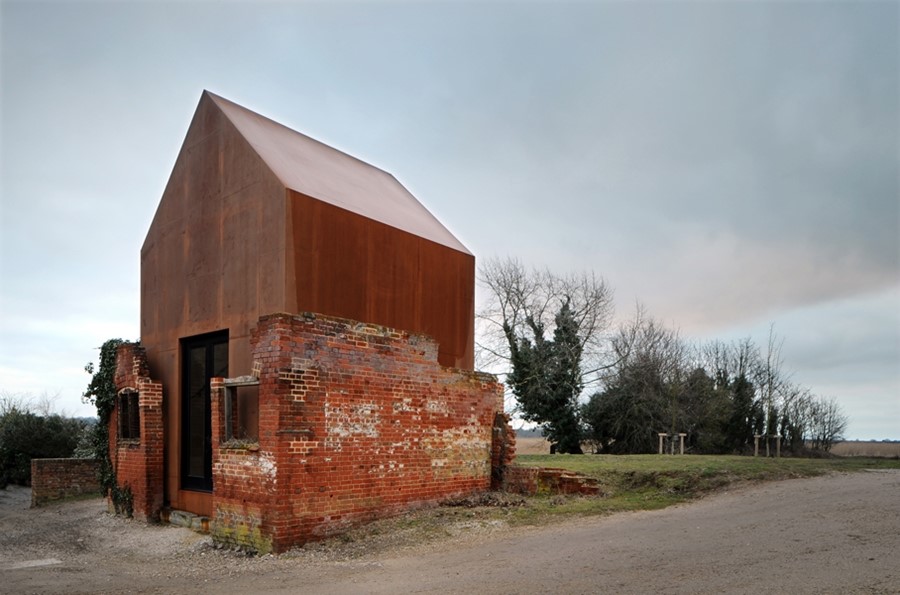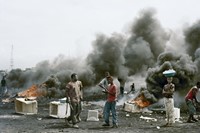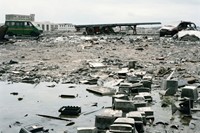Crumbling brick walls, plants weaseling their way into every nook and cranny, a once used fortress elegantly evolving into a state of ruin – and then a monocoque weathered steel lining is lowered in from above, sitting snuggly within the walls of
Crumbling brick walls, plants weaseling their way into every nook and cranny, a once used fortress elegantly evolving into a state of ruin – and then a monocoque weathered steel lining is lowered in from above, sitting snuggly within the walls of the old dovecote, retracing the internal lines of the original Victorian structure. This is Haworth Tompkins’ creation – Dovecote Studio on the Suffolk coast. Rather than remove all traces of the past, the London-based architects embraced the remnants of the existing structure, not just recycling materials, but recycling space.
This modern recycling of a historic relic is part of the latest major exhibition at the MAXXI Foundation in Rome – a comprehensive mix of projects from around the world that recycle the architecture and spaces around us in unique ways.
"Out of the 50 million tonnes of digital waste Western countries produce each year, in Europe only 25% of this is recycled close to home..."
Considering recycling in the more conventional manner of breaking down old materials and re-using them, Miniwiz constructed the modern-looking EcoARK Pavilion in Taipei, Taiwan to demonstrate their POLLI-BRICK™ system. Built from 1.5 million recycled bottles remoulded onsite – a staggeringly efficient method of recycling – the honeycomb shaped interlocking brick-like units are stacked and seamlessly engineered to form an outer protective shell for the self-sufficient, well-insulated space. Far from looking like loads of plastic bottles smooshed together, the EcoARK building walls are a myriad of delicate star-shaped plastic pieces forming a beautiful surface pattern.
In a separate room, away from all the inventive exploration of recycling causing positive changes to the architectural landscape, there is a recycling landscape that the world would rather ignore. The smouldering wastelands captured by South African photographer Pieter Hugo are a bleak portrayal of the remnants of our much celebrated tech revolution. His Permanent Error series captures one such appliance graveyard on the outskirts of Agbogboshie slum in Ghana. Out of the 50 million tonnes of digital waste Western countries produce each year, in Europe only 25% of this is recycled close to home, with the rest dumped in foreign pits and left for the local poor to burn up – retrieving small amounts of precious elements to sell, whilst slowly poisoning themselves.
Re-Cycle. Strategies for Architecture, City and Planet runs until May 20 while Pieter Hugo’s Permanent Error runs until April 29, both at the MAXXI Foundation in Rome.
Abby Schlageter is a member of super/collider, a London-based collective which explores science and ecology through the creative industries.



